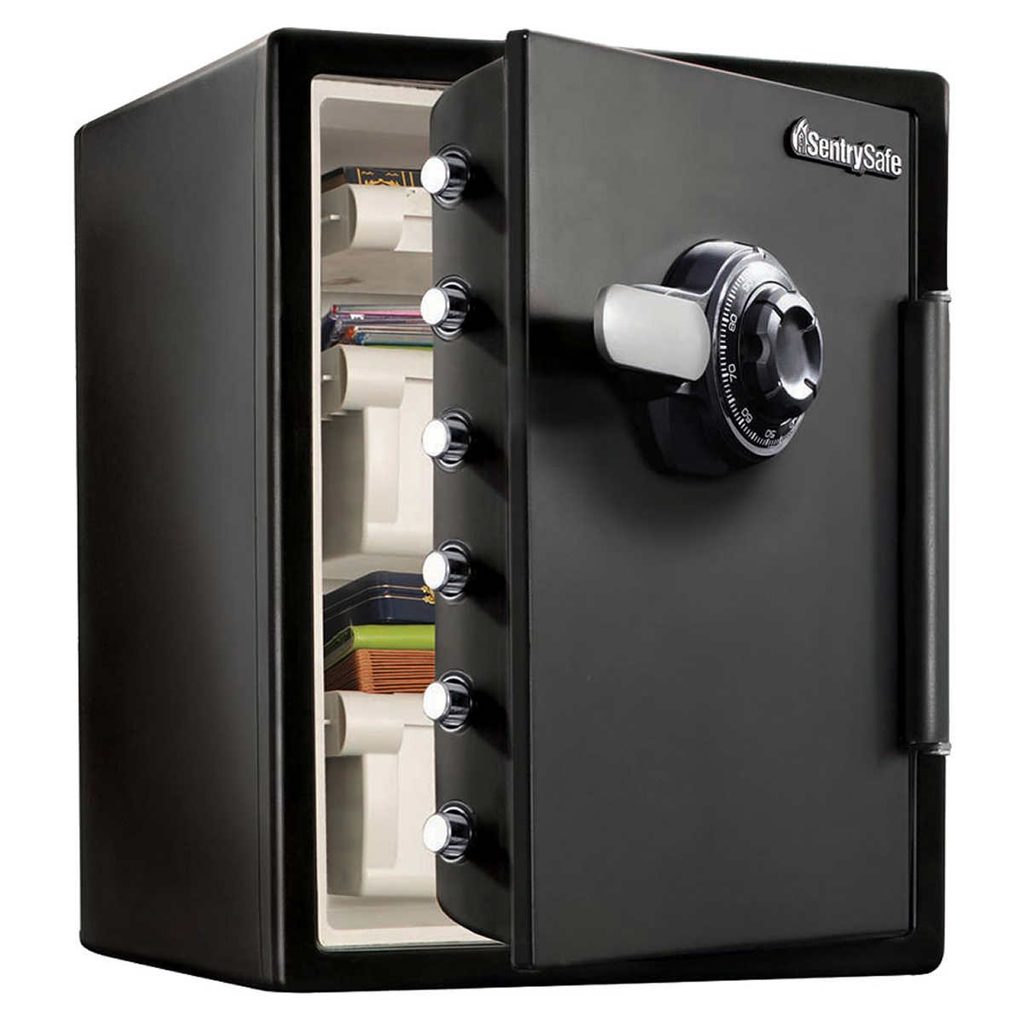Buying a Safe: A Complete Guide
Updated: Apr. 17, 2024

A home safe is a big purchase. Learn about common safe features for a smooth shopping process.
A home safe provides security for your belongings and peace of mind for you. While the average home safe isn’t completely impenetrable, it’s an effective deterrent for all but the most determined thieves. Even an inexpensive home safe certainly stops prying eyes and opportunistic hands in their tracks.
Before purchasing a safe, you must first decide what it is that you want to protect. Safes intended for irreplaceable valuables have extra security features and cost more than simple, fire resistant document safes. Read on to learn what to look for when buying a home safe.
On This Page
Choosing the Right Size
Your safe’s size and features will depend on its contents. A few family heirloom jewels don’t require much space, but once you add paperwork to the mix, you might want the extra real estate. Safe and Vault Store suggests sizing up if you can, since you’ll find more items to add over time, and replacing your safe in a few years is inconvenient.
A safe’s exterior dimensions aren’t an accurate measurement of its storage capacity because the door and walls vary in thickness. Instead, look at its interior size in cubic feet. Use the exterior dimensions to decide where you’ll put the safe.
Combination or Keypad
 Choosing between a dial combination lock and a digital keypad depends on individual preference. If you find the numbers on a dial difficult to read, a keypad might be a better option for you.
Choosing between a dial combination lock and a digital keypad depends on individual preference. If you find the numbers on a dial difficult to read, a keypad might be a better option for you.
Both styles have pros and cons. Combination locks are less expensive and don’t require batteries, but it takes a locksmith to change the combination, and they can be difficult to use for people with poor eyesight or shaky hands. Digital locks are easy to open and often have security features for incorrect attempts, but they require batteries and usually cost more.
Home Safe Security Features
Beyond the two most apparent home safe features — size and lock style — there are a number of specifications to research before making a purchase.
Product Certifications
Underwriters Laboratories tests many products to evaluate their performance, including holiday lights, space heaters and safes, although Safe and Vault Store says some safe manufacturers use private laboratories to save money. You may also see safes bear the ETL mark, meaning they were tested by Intertek Laboratories.
Safes without a UL or ETL label aren’t necessarily all bad. However, these labels prove that the safe model complies with industry standards. That assurance is reflected in the safe’s price.
Waterproof and Fireproof Safes
If protecting paper documents like tax records and birth certificates is your primary concern, you probably want a fire resistant safe. American Security Products Co. explains how home safe fire ratings work.
Good fire safes use one or two layers of gypsum board in the body and door. Better fire safes use two to four layers of gypsum board. And the best ones sandwich fire insulating material between steel plates. Better and best fire safes are more likely to be tested by Underwriters Laboratories or Intertek.
Any fire safe should list the amount of time it can maintain a safe internal temperature when exposed to a house fire. If your safe has a UL or ETL label, you can read the specifics of what its rating means and how it was tested.
Water resistant safes will protect your possessions in the event of a flood or under the spray of a fire sprinkler. These are rated for a certain amount of water and time. If you bolt down the safe, its waterproofing may be compromised.
Damage Resistance Specifications
Fire and water certainly post a threat to your safe’s contents, but some home safes are designed to resist other types of damage as well. These safes will thwart thieves with tools and survive higher falls.
Underwriters Laboratories conducts burglary testing and classifies safes according to its standards, but you can find damage resistant safes without an official UL sticker. Longtime safe and smart lock manufacturer Yale Home’s Product Manager Garrett Lovejoy recommends looking for “terms such as anti-drill, anti-saw, anti-bump and pry resistant.”
Another feature to look for is a tamper alarm. For example, the Yale Alarmed Value Safe “provides several different alarm types: lock out from entering the wrong code, tampering with the safe and low battery,” says Lovejoy.
Installation Considerations
First things first: Where will you put your safe? If thieves can’t find your safe, they can’t break into it.
The bedroom is the first place burglars look. But if your safe is somewhere so inconvenient that you avoid using it, that defeats its purpose. Take stock of your home to find a space that’s accessible to you but out of sight to others.
Something else to consider when installing a safe: Can a burglar pick it up and carry it away? If it’s a large, heavy safe, the answer is probably no. However, Consumer Reports says 1.2 to 1.3 cubic feet is a common home safe size, which will usually weight around 100 pounds and cost between $150 and $300. And a group of thieves can still steal large safes if they have the right equipment. That’s why many safes come with holes to be bolted to the floor. Not only does fastening the safe protect it from theft, it may help you save money on insurance.
Placing and bolting down a safe can be an arduous process. It might be worth hiring a professional to do the installation, especially for larger safes. Before making a purchase, ask the retailer if they offer installations.